
Zoniers, Porte de Choisy, 1913
By Stephen Longmire, Afterimage, May 2001
It has been 20 years, amazingly enough, since New York City’s Museum of Modern Art (MoMA) launched its landmark cycle of exhibitions of the work of French photographer Eugene Atget (1857-1927), who spent his last 30 years documenting the architectural record of Paris and its surroundings at the beginning of the last century. Together, the four installments of “The Work of Atget,” and the plush four-volume catalog of the same title that appeared between 1981 and 1985, were called the largest exhibition ever dedicated to a photographer. Who knows how such determinations are made, but I doubt this one has been surpassed–though the recent spate of Atget exhibitions and publications listed above would have given MoMA a run for its money, had they been a united effort. (If catalog weight alone were a deciding factor, there would be no question MoMA’s slender volumes, which until recently remained the standard work on the photographer, in English or any other language, had been outdone.) That the current Atget revival represents no single view of the elusive photographer, but a handful of revisionist ones alongside some traditionalist retrenching, is indicative of the dramatic shift in Atget studies since 1985, away from magisterial monographs toward more guarded, typically more historically and politically minded readings of the photographer’s vast archive. Just who was Atget, and what did he think he was doing? These questions continue to determine where one stands on many of the pivotal issues in the history of photography, and its place in today’s museums.
The Work of Atget was the work of John Szarkowski, now retired Director of MoMA’s Photography Department, and his then assistant Maria Morris Hambourg (who since created and now heads the Department of Photographs at New York’s Metropolitan Museum of Art). Szarkowski is undeniably right to insist, as he does in his recent return to the subject, Atget,
The single most important contribution to Atget scholarship is surely that made by Maria Hambourg, when she established, in the early nineteen eighties, that Atget had divided his work into thirteen categories, or series, some small and some large, and when she identified the numerical sequences by which these categories were identified in Atget’s file. From these data she was able to produce a chart that enabled the rest of us, for the first time, to date Atget’s pictures with reasonable certainty. At the same time, she estimated Atget’s total production–the pictures that he saved–at about 8,500 pictures. [3]
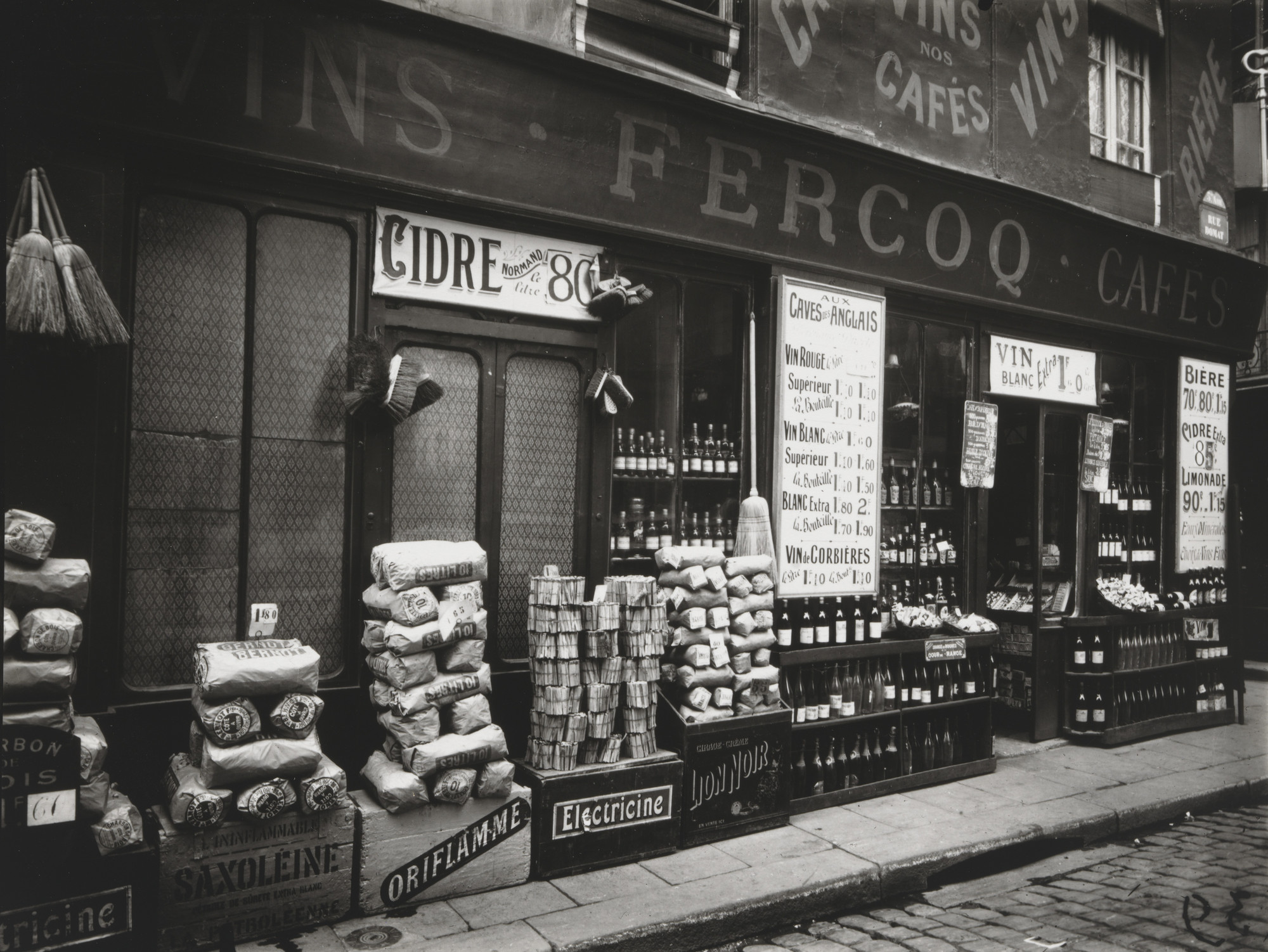
In 1968 MoMA acquired some 5000 Atget prints and some 1300 negatives from American photographer Berenice Abbott, who purchased the remains of the older photographer’s studio from his estate. This makes MoMA’s Atget collection by far the most substantial on this side of the Atlantic. Significant collections of Atget prints and negatives exist in the archives of several Paris libraries and museums that bought from him during his lifetime (notably the Bibliotheque Nationale, the Bibliotheque Historique de la Ville de Paris, the Ecole des Beaux-Arts, the Musee de la Ville de Paris [Musee Carnavalet] and the Service Photographique des Monuments Historiques), but until quite recently these institutions were not in the habit of regarding such historical materials as art. The American obsession with Atget started that.
No one debates that Atget began his photographic career (in 1887, though he would not begin photographing Paris for another 10 years) as a stock photographer. He advertised “documents for artists” (“documents pour artistes”), but evidently made the bulk of his living from sales to institutions, particularly those that catered to the tastes of architectural connoisseurs who lamented the demise of Old Paris (le Vieux Paris), or remnants of the city dating back to before the Revolution of 1789. Paris was substantially rebuilt in the 1850s and ’60s by Napolean III’s Prefect Baron Georges-Eugene Haussmann, who carved up old neighborhoods to lay wide boulevards effectively leveling the largest medieval city in Europe to create a modern imperial capitol in its place. It was an “urban renewal” program of which latter-day bulldozer builders like Robert Moses (who made New York City fit for highways a century later) would have been proud, but the movement had its detractors, off whom Atget continued to make his living at least until 1920. That year Atget sold over 2600 of his 18 x 24 cm glass negatives–containing, he boasted, “all of Old Paris” [4]–to the Monuments Historiques, for the substantial sum of 10,000 francs. He was, arguably, free of his project, and of the care of his negatives, which he had barely preserved through the bombardments of the First World War, during which he ceased photographing. But Atget kept working, making many of the pictures for which he is now remembered during the remaining seven years of his life.
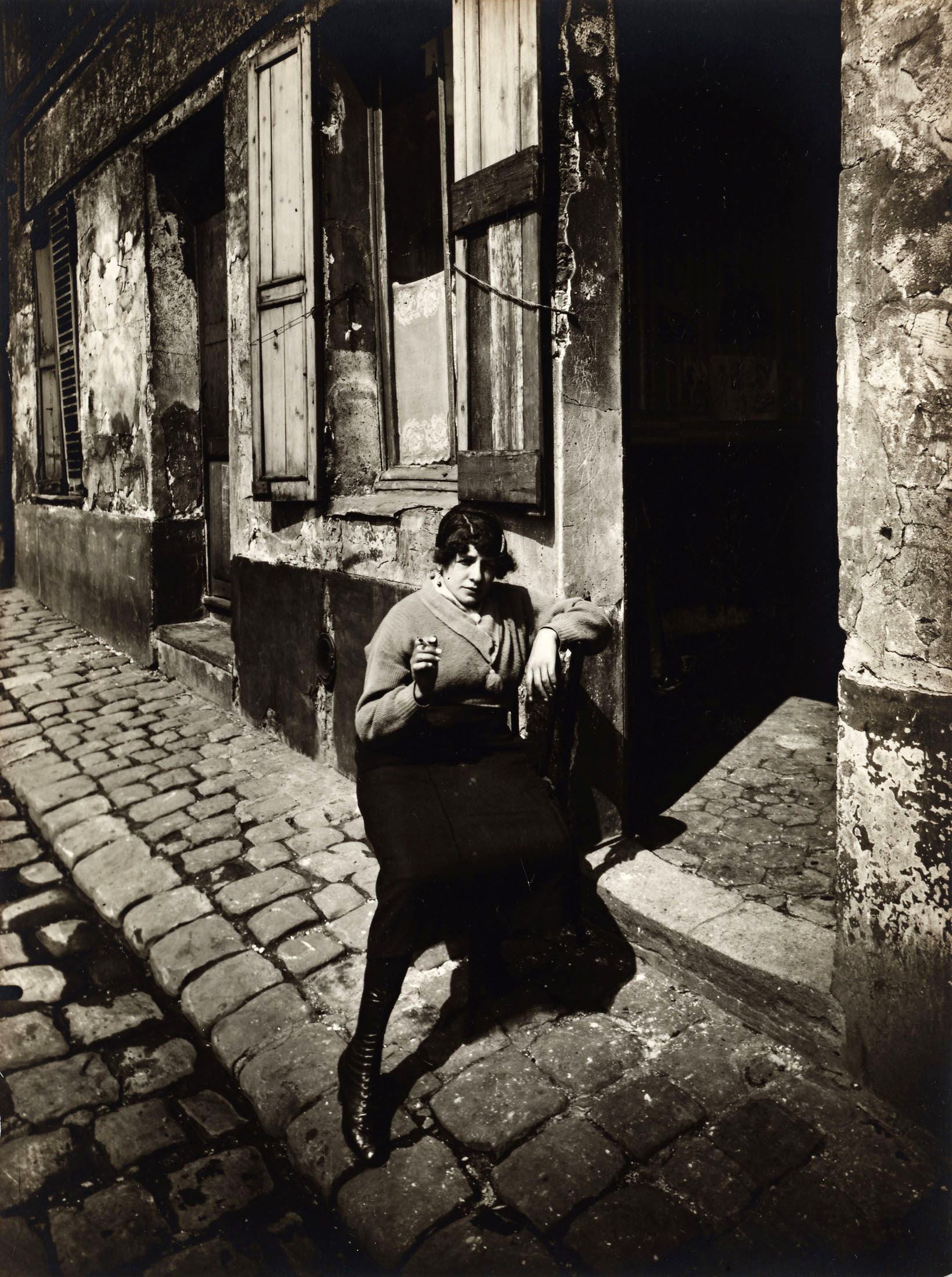
Some maintain that, like a nineteenth-century photographer (Californian Carleton Watkins, for example) having sold his negatives for a profit, Atget naturally went about rephotographing familiar subjects, perhaps a little differently, to replenish his stock. Others–Szarkowski chief among them–see this as the moment when Atget, free of the nuisance of commercial assignments, even if they were self-imposed, can work “for himself” at last. It is a common enough narrative in the history of the arts that they must shake off the shackles of commercialism in order to achieve aesthetic worth, but this mirrors a favorite narrative of the curator’s still more closely. Szarkowski has always prized “vernacular” photographs, created on long-forgotten assignments, often by anonymous “journeyman” photographers, that transcend their utilitarian roles with their sheer formal elegance. In such uncut gems he has discerned clues to photography’s uniqueness, to its artless, time-bound art. As a curator, he has been a collector of these curiosities, including many Atget photographs made prior to 1920. But it is one thing to liberate an artist’s work posthumously and quite another to see the man himself set free. That Atget himself should have become an artist, as we now understand that term, in his own lifetime–even if no one was there to notice–is a wish fulfilled for Szarkowski. To prove this point, he emphatically maintains the superiority of Atget’s late work (which includes many of the studies of seventeenth-century parks Andre le Notre designed around Paris and of modern shop windows in the city). Perhaps Szarkowski feels some of the relief he remembers Abbott expressing when Hambourg showed her that several of Atget’s interiors of well-furnished bourgeois apartments had to have been made in his own home: “Oh good. I’m glad the old fellow wasn’t as poor as I thought” [5] But more than money is at stake. Hambourg’s scholarship allows Szarkowski to save Atget from the ignominy of going down in history as a lucky commercial hack.

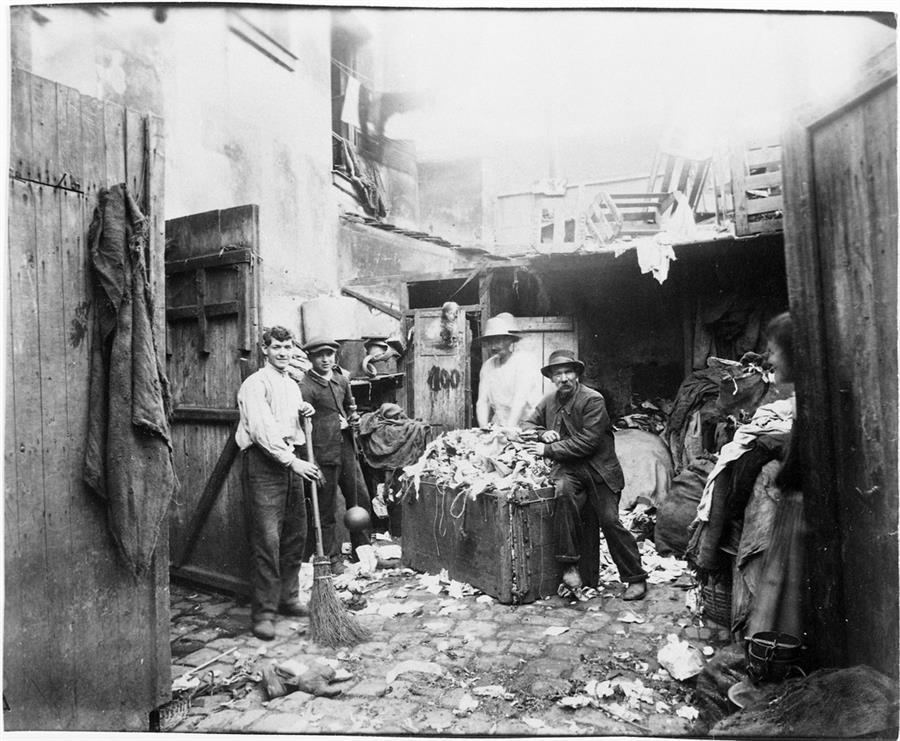

Prior to Hambourg’s ground-breaking research, Atget’s achievements seemed scattered, at best, if often inspired. In revealing the structure of his work, she sketched for Szarkowski the outline of his ideal photographer, one who reconciled the medium’s documentary obligations with the more eccentric goals of art, all the while standing outside that airless room politely called the “art world.” Anachronistically enough, Atget, who made his work for museums quite unlike MoMA would turn out, in Szarkowski’s supple hands, to be the long-awaited forebear to the generation of documentary art photographers the curator spent his influential career promoting–photographers like Robert Adams, Diane Arbus, William Eggleston, Robert Frank, Lee Friedlander and Garry Winogrand (not to mention Abbott’s contemporary, Walker Evans, who first translated Atget for American audiences). It is as difficult to imagine Atget understanding these latter-day photographers’ motives as it is for us to apprehend his own. As Szarkowski once wrote of Atget’s adoption by an earlier generation of art photographers with documentary interests (thanks to Abbott’s efforts to have his work exhibited and published), “Even small revolutions are benefited by honored forerunners, who, being no longer in a position to protest, make the best shibboleths.” [6] Atget’s silence may have been Szarkowski’s gain.
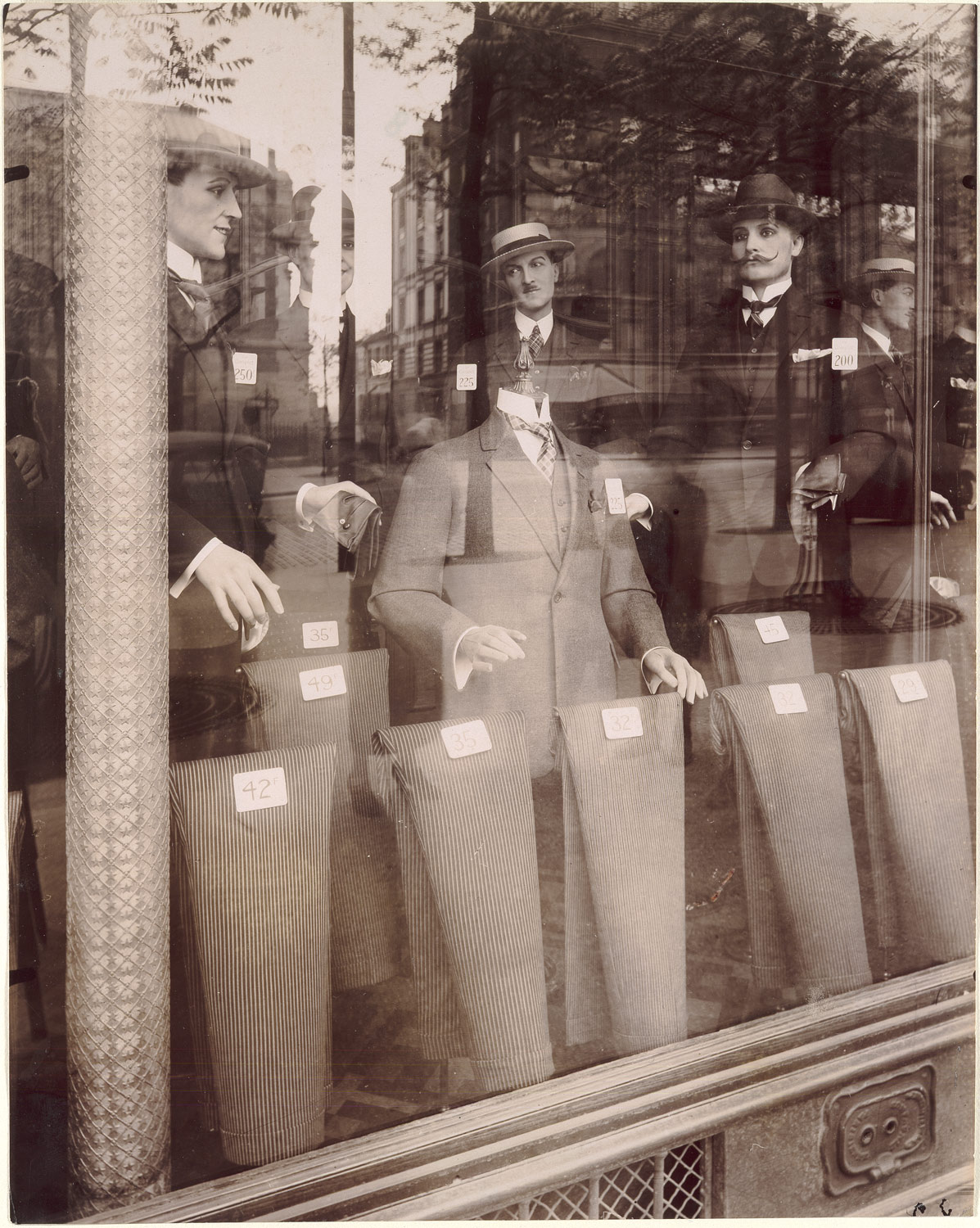
Critical reception of The Work of Atget was enthusiastic, with a handful of significant exceptions. These have largely determined the path of Atget scholarship in the intervening years, which has been (often vitriolically) reactive against MoMA’s characterization of the photographer. In her influential essay, “Photography’s Discursive Spaces,” first published in 1982, Rosalind Krauss objects to what she considers the misappropriation of nineteenth-century photographic “views” into the canon of the modern art museum, and suggests that such standard art historical categories as “artist,” “career” and “oeuvre,” do not apply to documentary work of a prior era. [7] She acknowledges the value of Hambourg’s efforts to crack the code organizing Atget’s negatives, but suggests that many of the problems Szarkowski and Hambourg describe fitting Atget’s often inchoate archive into MoMA’s are addressable in terms of the institutional clients whose classification systems may have determined the photographer’s own. (“For u s, perhaps twenty percent of Atget’s work attains the kind of formal surprise or original grace by which we identify a successful work of modern art,” Szarkowski acknowledges.) [8] Undoubtedly, the institutional demands on which he depended shaped Atget’s output, but the relationship could also have been symbiotic. To my knowledge, no one has fully addressed this question, tracing all possible relationships between the various institutional filing systems with which Atget regularly dealt and his own complex and ever-changing one. By Krauss’s analysis, it is irrelevant whether Atget was a genius, or for that matter, an idiot savant, as earlier critics had suggested–the terms simply do not apply. For her, he is a holdover from the nineteenth century, not a modern artist. Abigail Solomon-Godeau furthered this argument in her trenchant essay, “Canon Fodder: Authoring Eugene Atget,” originally published in 1986, that details MoMA’s institutional investment in recognizing Atget the romantic documentarian just when it did. [9]

To Molly Nesbit, Atget is no nostalgic but an anarchist activist, working to politicize the dry document to destabilizing ends. In her view, his work anticipates the work of leftist theorists like Walter Benjamin and Michel Foucault. Benjamin considered Atget the embodiment of “surrealist photography,” dramatizing our estrangement from a world of mass produced objects; Foucault’s preferred metaphor for the modern rationalization of power is the archive–like Atget’s own. Surely that is why he spent so much time among the poor, and neglected to represent the powerful, showing only monuments to their dissipation. Nesbit gave the MoMA exhibitions their toughest review in the art press, and has analyzed the thematically arranged albums of his own photographs Atget bound for the Bibliotheque Nationale, most extensively in Atget’s Seven Albums. [10] These albums (reproduced in miniature as an appendix to Nesbit’s book) provide the rare opportunity to see Atget operating as “author-editor” (“auteur-editeur,” as he listed himself on the title pages) of his own work. The subjects–Parisian interiors, vehicles and fortifications, among others–do not all duplicate categories in the photographer’s filing system, though at least one, “Art in Old Paris” (“l’Art dans le Vieux Paris”) does. Some insist these were simply catalogs of prints available for sale; if the albums were maquettes for production, that goal was never realized.
The observation with which Szarkowski’s opened The Work of Atget still holds true: “It is difficult to name an important artist of the modern period whose life and intention have been so perfectly withheld from us as those of Eugene Atget.” [11] As a result, it often seems the photographer is a mirror for his interpreters, and what they see in him reveals as much about themselves. There are now several Atgets to choose from.
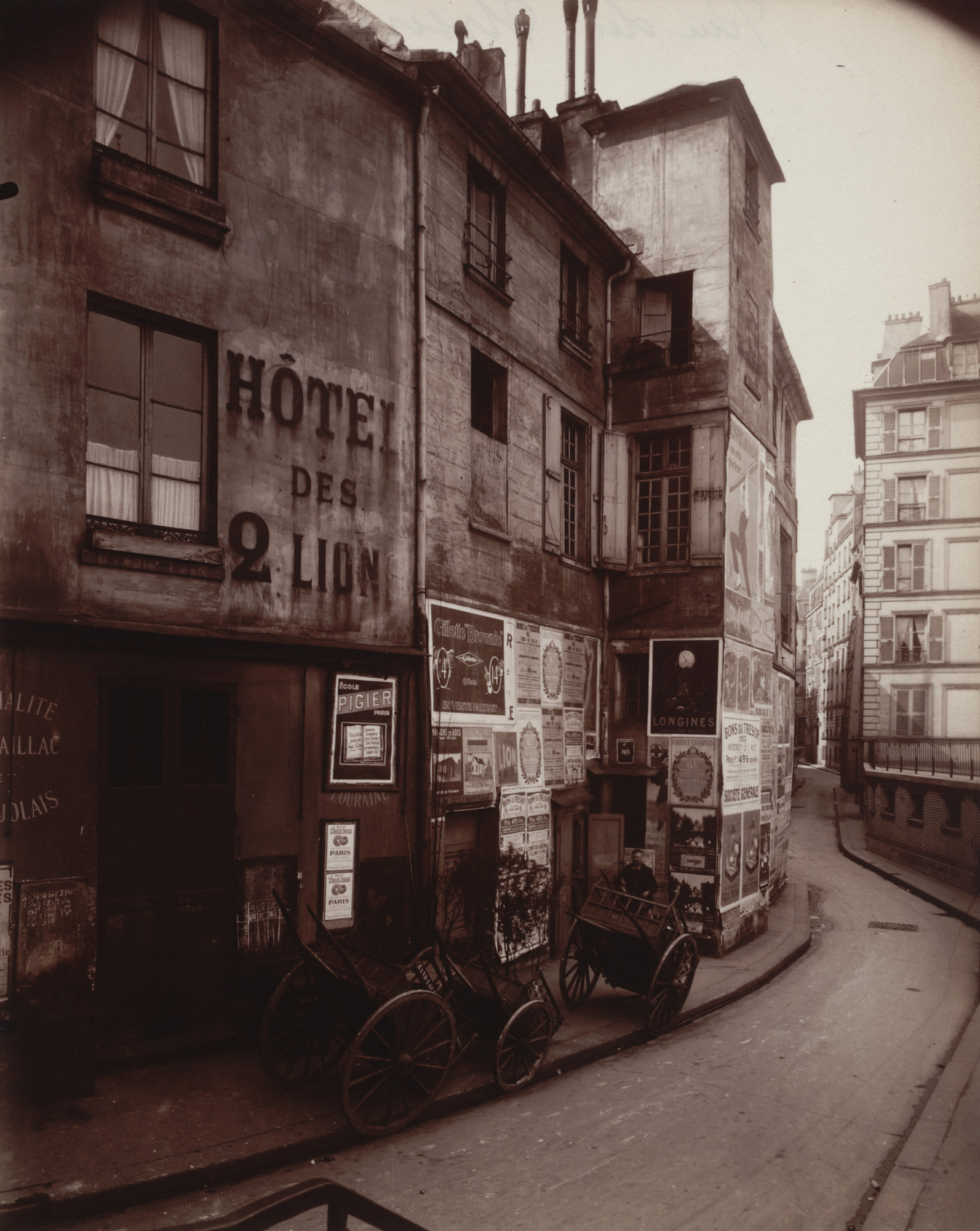
The small volume on Atget that the J. Paul Getty Museum recently added to its In Focus series on canonical photographers in its Los Angeles collection (on the occasion of an Atget exhibition last summer) provides as good an illustration as any of the conflicted state of contemporary Atget scholarship. At the back of the book, after 44 modestly reproduced plates with commentary, is the transcript of a conversation between half a dozen Atget scholars. Weston Naef, the Getty’s Senior Curator of Photographs (and to a lesser degree, Associate Curator Gordon Baldwin, who introduces the volume and writes the notes on the plates), stands squarely on the side of a romantic, American reading of the French photographer, with the more historically minded David Harris, formerly of the Canadian Centre for Architecture in Montreal, now an independent curator, and Francoise Reynaud, Curator of Photographs at the Musee Carnavalet–one of Atget’s original clients–gently moderating their excesses. [12]
The first photographs up for discussion are Atget’s two putative early “self-portraits,” studies of shop windows in which his reflection is more or less visible (Shop Front, rue Michel-le-Comte, 1901, and Antique Store, rue du Faubourg-Saint-Honore, 1902). Detail shots featuring blow-ups of these reflections punctuate the transcript like posters in a man-hunt for the missing photographer. Opinions differ as to whether the former shows Atget at all, but, whether intentionally or not, he can clearly be seen operating his camera in the antique store window. It is a rich irony, antiques being Atget’s specialty. He photographed cultural detritus of all sorts, and, by a perfectly natural transubstantiation, turned all he photographed into antiques. Now his photographs seem faithfully to represent–perhaps even to invent–that ultimate foreign country, the past. [13] Apart from Berenice Abbott’s 1927 portraits of Atget in his dotage and a single snapshot of him in middle age, we have no access to Atget’s face, not in his prime. [14] The prospect of a self-portrait is a wish fulfillment in more ways than one. His admirers would like to see him as he saw himself. Admirers of Naef’s persuasion also badly want confirmation that Atget was the sort of artist who made self-portraits–an Artist, in other words.
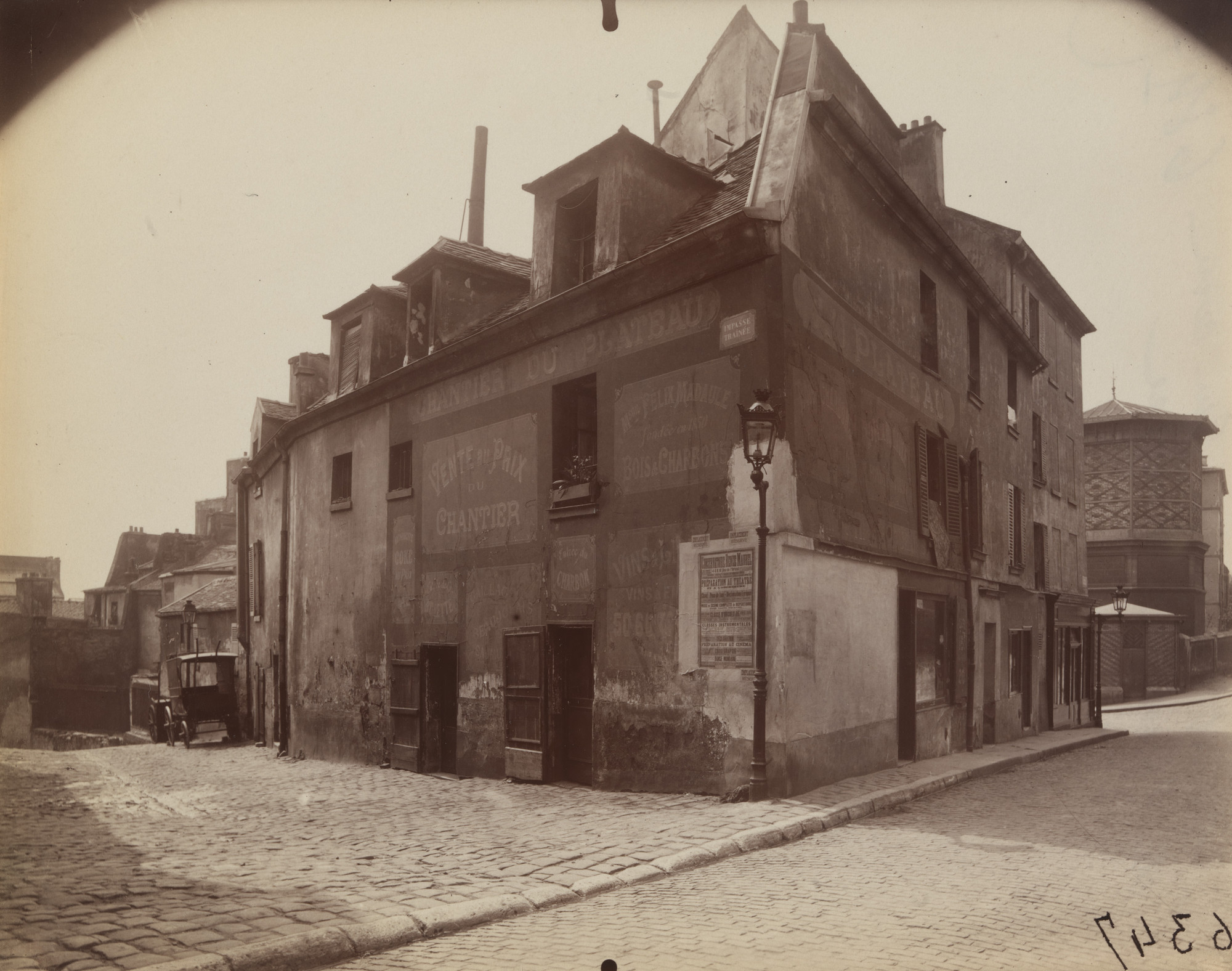
For Naef, even the things that seem to make Atget less like an Artist end up making him more like one. Atget took up photography, he remarks, “when Alfred Stieglitz, the best-known photographer in the United States, was at a great turning point in his life and was about to abandon working in a documentary style. So Atget began his career working against the stream of photography as art,” he extrapolates, only to conclude, “He occupies an against-the-grain position that is often admired in artists.” [15] This is an accurate account of changes in taste since Stieglitz held sway, but it seems a tad self-serving to suggest Atget was effectively rebelling against Stieglitz’s rebellion, earning the place that would later be made for him in the ranks of the avant-garde. That this seemingly accidental self-portrait does not behave as self-portraits are supposed to only heightens its effect. “Every self-portrait that I know of is motivated by the desire of the artist to illuminate himself in some important way,” Naef asserts. “Here we have anti-illumination.” [16] Atget’s face is not clearly visible in either reflection–a clear stroke of genius on his part.
Next the group considers an early Atget photograph of children playing at their governess’s feet in Paris’s Jardin Luxembourg (Children Playing, Luxembourg Gardens, c. 1898). Naef suggests this too could be a self-portrait, since it contains a miniature stage with actors playing bit parts, as Atget himself did in his aborted theatrical career: “If one wanted to pursue the idea that what defined a great artist is a quality of every image being autobiographical, I think that, once again, this picture is a kind of self-portrait.” [17] Such high-minded criticism ordinarily would not raise an eyebrow, but if it does nothing else, Atget’s case compels one to ask just what the over-used term “documentary” might have meant at his moment in the history of photography. Applying to him wholesale the sort of critical language Stieglitz spent the better part of his lifetime coaching critics and curators to use on photography surely collapses any distinction between these two divergent contemporaries Naef has strained to draw.



Francoise Reynaud keeps the conversation earthbound. On the matter of the reflected “self-portraits,” she volunteers: “In our collection, these two images are catalogued as documents about street signs…. These photos are in our topography files according to their addresses; that’s how they were placed when Atget sold them to us.” [18] And concerning the children at play: “In our cataloguing files, pictures like this were called scenes de rue, street scenes. For me, this is really a typical scene de rue, but of a park. It’s a picturesque scene that shows the way of life of wealthy people, and that’s part of traditional life in Paris as well.” [19] Of course, that does not mean the photographs could not serve other ends at the same time.
Undeterred, Naef suggests a late Atget of the Pantheon on a rainy day (Pantheon, 1924) is “less of a document and more of an attempt to compose a picture that has a completely independent reason for being.” [20] Harris consistently reminds his colleagues how many times Atget rephotographed each site–a critical strategy out of which he recently mined a whole exhibition (discussed below), as if to suggest that such effects are carefully constructed and only part of the photographer’s total view. Interestingly, Naef ends up crediting his unapologetically romantic view of Atget to the “experimental” artists “of the early part of the [last] century,” presumably the Surrealists, insisting, “we’ve learned from those artists how to appreciate Atget. I certainly have.” [21] Harris summarizes the historian’s view, which has its own shortcomings, asserting: “the meaning of Atget’s work resides in the work itself and in an exhaustive analysis of it.” [22] These two views squared off on upper Madison Avenue in New York this winter.
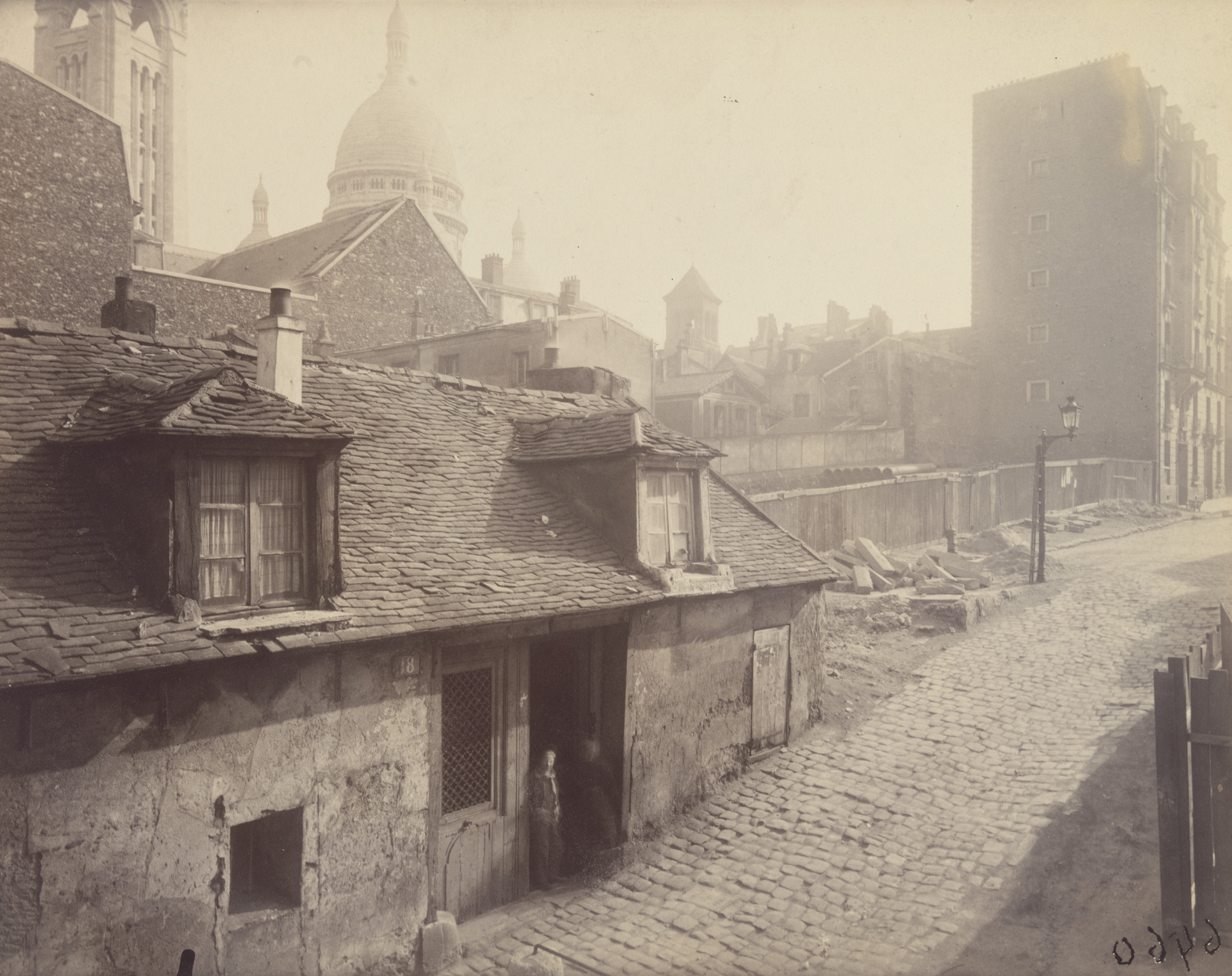
The first photograph one saw upon entering “Atget the Pioneer” at the International Center of Photography (ICP), was, oddly enough, by Marcel Duchamp. The Conceptual artist’s antiseptic record of a bottle rack (Porte-bouteilles, 1961), its prongs upturned like the horns of some industrial beast, was flanked on either side by an Atget photograph half a century older of metalwork decorating Paris stairwells of varying pedigree (Rampe, 5 rue de Montmorency, 1908 and Rampe, 57, rue de Varenne, 1908). [23] The stated goal of this exhibition was to chart affinities between the work of Atget and various modernist photographers inspired by his example. Still, opening with the Duchamp seemed almost an in-joke.
It is well known that Man Ray and his fellow Surrealists claimed to have “discovered” Atget, the old photographer who lived down the street, shortly before his death. Le pere Atget, they called him–“father Atget,” or colloquially (and more derisively), “old man Atget.” Man Ray included Atget photographs in numbers 7 and 8 of the journal La Revolution Surrealist in 1926, but it does not seem to have occurred to him they might be interesting except as remarkable objects he, Man Ray, had found. Nor does it seem to have occurred to him that Atget might have insisted his name be kept out of the publication–an avoidance of publicity incomprehensible to the more confrontational artist–because perhaps the old man understood enough about his neighbors not to want to be affiliated with their revolution. If so, the old man was out of luck.
There was a stroke of genius in ICP’s daring opening to a show that otherwise took few intellectual risks, beyond being willfully anachronistic. Never mind that pairing the Atgets with the Duchamp obscures distinctions historians of photography have been busily making for the past 20 years between the photographs one made for ostensibly commercial documentary purposes–to show ironworkers and others interested in their craft how it was done in the old days, among other possibilities–and the other’s wry found object, that only makes sense within the arena of high art, into which Duchamp was forever bringing things that did not “belong” there. The point here is not that Atget was also a scavenger of found objects, but that he himself remains one of the abiding found masterpieces of Surrealism, and that his work can never be engaged entirely outside this discourse of appropriation, since Man Ray saw fit to publish the work of the Montparnasse neighbor he deemed a primitive. This seems a curatorial rejoinder, however oblique, to the argument that Atget should only be seen within the historical context of his own ambitions and prospects. That may no longer be possible; like Dostoyevsky’s Ivan Karamazov, “We know what we know.”
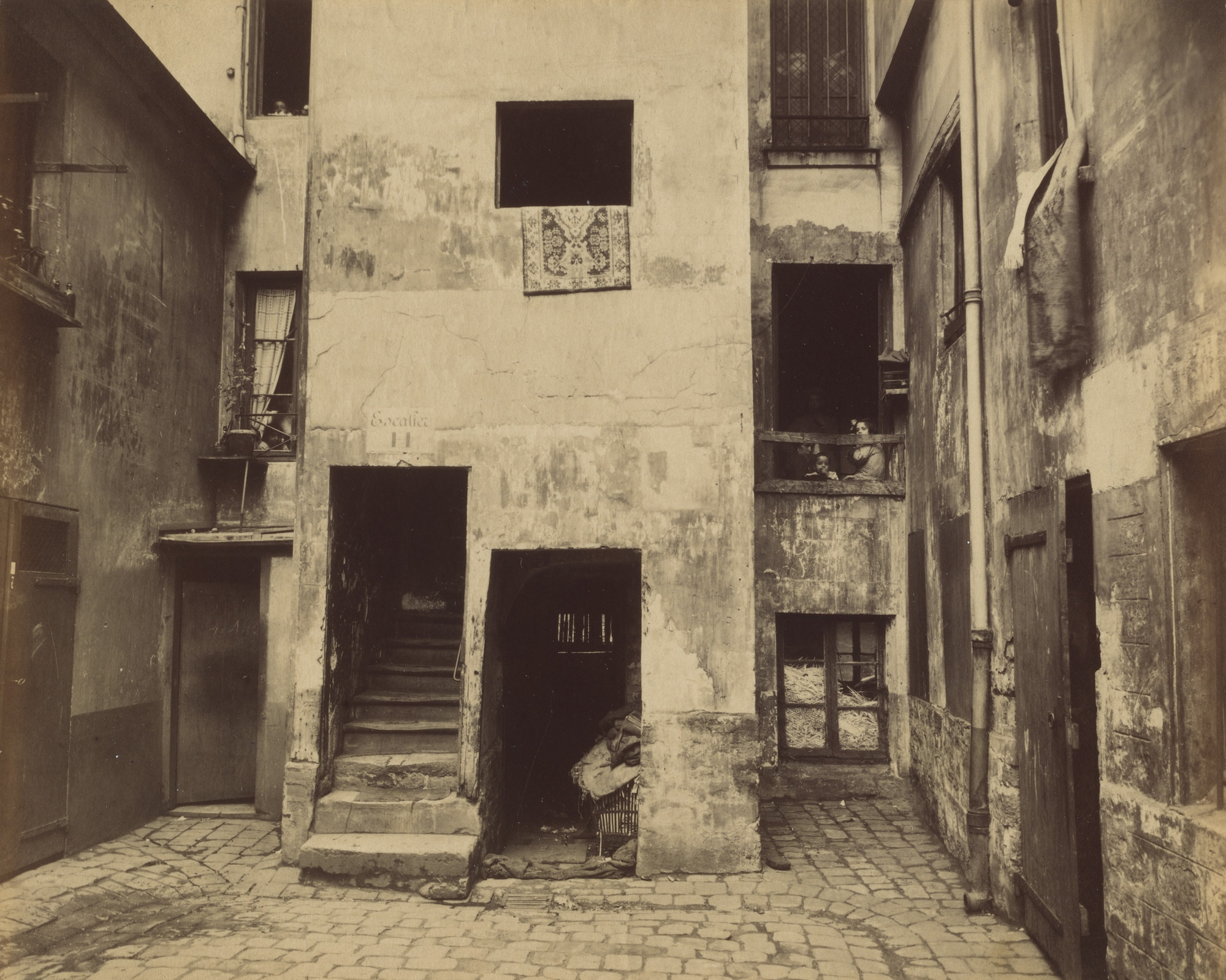
“The value of a work of art stands in inverse proportion to the number of ideas that can be attached to it,” curator Jean-Claude Lemagny of the Bibliotheque Nationale (whence this show originated), maintains in the exhibition catalog. He proceeds to do his very best to attach all manner of ideas to Atget’s uncategorizable body of work, but, as he predicts, few of them stick. The photographer’s monumental archive presents a unique challenge to interpreters because what little is known about the reasons for its existence seems inadequate to explain its size and complexity and the effect portions of it have on modern audiences. Pairing a selection of Atgets alongside the work of prominent Modernist photographs like those of Bill Brandt, Walker Evans, Lee Friedlander and August Sander as if in a series of before and after comparisons, this exhibition begs any question of the relationship between the work of le pere Atget and his many unexpected offspring. Instead, it details an array of influences vital to the c onstruction of the history of twentieth-century photographic art. There is nothing particularly wrong with this, but nothing surprising either. A viewer unaware of the debates surrounding the institutional presentation of Atget’s work in the past two decades is not asked to consider questions more basic than just what Friedlander–one of the show’s few living heros–may see in Atget’s example, as if they were working under the same constraints, or as if the constraints of one’s time and circumstances hardly mattered where the making of fine photographs is concerned. [24] It was a rare treat to see so many vintage Atget prints on display, even if they were of various quality, but the unexplained inclusion of several contemporary Iris prints of Atget images (quite handsome Iris prints at that, looking a lot like photogravures) was another indication that historical consciousness was not the curator’s primary concern–confirming the validity of a well-known history of photographic art was.



There is an innate conservatism to certain sorts of comparison, probing structures all of whose parts are understood to be in the right place. In the catalog and on the wall Atget’s 1907 detail of a fountain showing the mustachioed head of a fish designed to spew water from the mouth (Detail of the Fountain in the rue de Grenelle by Bouchardon, 1907) appears alongside Evans’s 1935 photograph of an African mask (African Mask, 1935), part of a series commissioned by MoMA to document an exhibition of these “primitive” artworks. In both photographs the inanimate face is shown in three-quarter profile facing right against a blank background. This would become standard practice for copy photography. Is the point what Evans did with Atget’s example, or some deeper, accidental affinity? Atget’s 1899 portraits of street vendors (les petits metiers) are paired with examples of August Sander’s catalog of human types assembled some 30 years later. Did the two photographers organize their worlds, or just these pictures, in similar ways? Each of these comparisons is suggested by obvious formal similarities between the works. But in each pairing the Atget is effectively transformed, rendered conscious by later standards, brought up to date. There is nothing challenging about such comparisons; they tend to confirm the expectations they set out to test and discourage political readings. Despite these comparisons of Atget’s pioneering efforts with those of his latter-day followers, the Surrealist urge to take Atget out of context remained the structuring principle of the show. As Robert Hirsch writes in his recent history of photography, “The surrealists, who gave themselves permission to find new meaning in a subject or discard the intended one, saw Atget as a primitive in touch with his unconscious self.” [25] Atget has since come to serve as the unconscious of documentary photography.
A special treat within this exhibition was the sampling of 15 previously unexhibited studies of trees Atget made at the Parc de Saint-Cloud just outside Paris between 1909 and 1911. Thirty-nine of these recently turned up in an envelope at the Bibliotheque Nationale, from which they apparently had not been removed since they were purchased from the photographer in 1923. [26] Archives are more like volcanoes than canyons: they periodically churn up the unexpected, rather than exposing all their strata to view. As the Bibliotheque’s photography curator sylvie Aubenas remarks in a brief essay on these images in the catalog to this show, knowing these images were of interest to the staff of France’s national library in 1923 does not tell us what they saw in them. Applying the word “documentary” to Atget’s photography, as he did himself, answers few of our questions and poses others, suggesting as it does that the modern documentary practices Atget helped shape already existed in the forms we have come to expect. [27] Did this portfolio record trees of a particular vintage or notoriety, or was it a record of possible “views” artists might paint? All photography is in some measure “documentary,” literally speaking; since Atget’s time the term has become associated with a certain set of styles and subject matter his example is often used to bolster, which cannot explain him away, as these gnarled trees attest.
A short walk up Fifth Avenue at the Museum of the City of New York (sister museum to Paris’s Musee Carnavalet, where the show originated), a very different Atget was in residence. Curator David Harris presented an exhaustive and exhausting survey of Atget’s architectural photography, “A Portrait of Paris: Eugene Atget at Work,” in the local history museum that supported and houses Abbott’s reply, her Depression-era “Changing New York Project.” Yellowed prints of every known view Atget made over a lifetime in dozens of favorite sites were hung chronologically, side by side. Harris was at pains to focus attention on the photographer’s exploratory movement through each urban subject over time, but the result was too much like looking over a photographer’s contact sheets–it diminished the impact and left one wondering if this was really the right guy. Implicit in the scope of Atget’s project is an acceptance that not every picture will be equally good, but it was difficult to separate the “Atgets” from the dros s in this extensive display–an instructive, but not necessarily productive, effect. If nothing else, the show demonstrated how carefully constructed MoMA’s more compelling Atget is. “The meaning of Atget’s work resides in the work itself and in an exhaustive analysis of it,” Harris had told his colleagues at the Getty. If only the work were self-interpreting! This immensely useful show made clear it is not, and that without a more apparent critical stance, or a story to tell, Atget can remain mute, even in the best curatorial hands. Yet, of all the recent Atget exhibitions, this was doubtless the greatest contribution to scholarship. Unfortunately, the catalog was not translated, but regardless, it would not be the first Atget book I would give a young photographer.
German publisher Taschen’s new trilingual Atget volume, Paris: Eugene Atget 1857-1927 (2000), aspires to be the new European reference on the subject, and covers the ground quite adequately. It provides a reliable scholarly introduction to the photographer for a broad audience, and organizes its selection of photographs according to Atget’s series, not just a curator’s preferences. But the variation in plate sizes–some larger, some smaller than Atget’s own–and the watery reproductions do leave something to be desired.
The obvious lesson of this new generation of Atget exhibitions and publications is that MoMA’s once standard presentation of the photographer is no longer standard. Another, less expected one, is that no one has yet rivaled the elegance or effectiveness of Szarkowski’s Atget, even if his reality is in question. The curator’s swan song to his greatest discovery recalls his 1995 Alfred Stieglitz at Lake George; in retirement he seems to be bidding his favorite photographers farewell. He even forges an improbable link between the two, suggesting that Atget’s study of an apple tree (Pommier (detail), (1922-23)), made the same year as Stieglitz’s famous image of apple branches at his summer home in upstate New York, could have been made the very same day. [28] Atget gets no new exhibition (MoMA would probably have difficulty justifying that), but the 100 photographs lavishly reproduced in Callaway’s volume are all from MoMA’s collection, presumably the curator’s favorites. There seems no special occasion for this book–except perhaps to counterbalance other recent efforts.
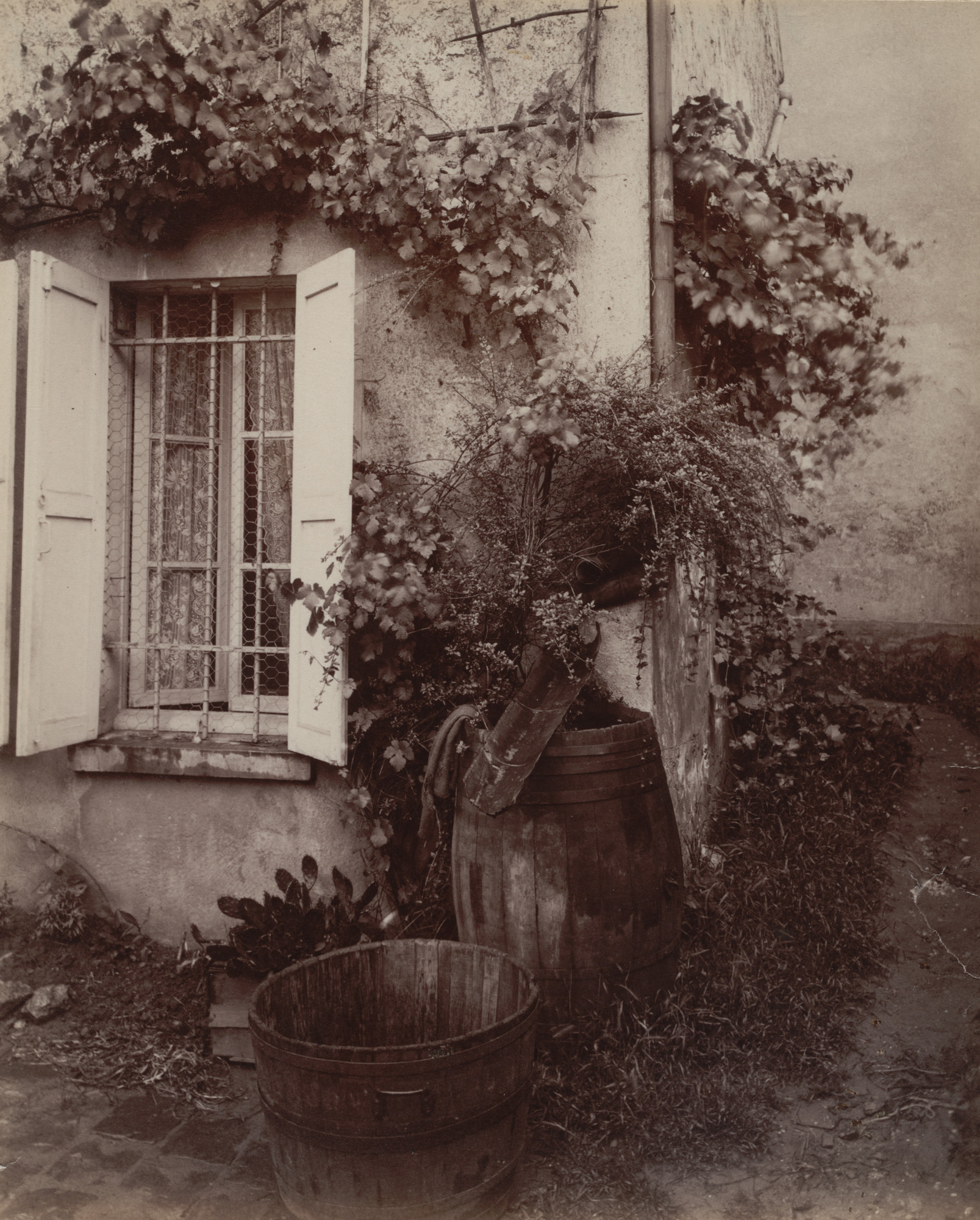
Szarkowski has always preferred the resonant aphorism to the extended demonstration–a maddening, seductive habit. He periodically cites his debt to the neglected Atget scholar Ferdinand Reyher, who wrote evocative extended captions as wall text for an Atget exhibition at the Addison Gallery in Andover, Massachussetts, in 1948 (as well as a lost novel based on the photographer’s life). Clearly this has been a model for Szarkowski, despite his prior admission (made with Reyher in mind), that “the caption form does not lend itself to systematic analysis.” [29] Like his popular collection, Looking at Photographs, Atget is a series of eclectically chosen photographs, each accompanied by a one-page essay. It would be hard to distill an argument from the contents of this book, other than the obvious one that the curator continues to find the photographer riveting and elusive, and strives for both traits in his prose. At first glance the book seems as ill-organized as Atget’s work once did. But nearly all the impor tant topics are addressed, after a fashion. Indeed, it may be the principal, unconfessed purpose of this new book to respond, politely but tartly, to the critics of Szarkowski and Hambourg’s earlier, more substantial one. (“The noted Atget scholar Molly Nesbit–if I read her correctly,” begins one memorably arch retort…). [30] Regardless, with his little essays that do not exhaust their subject (or their reader), Szarkowski tries again to describe the hold Atget’s work has on him. It is “perfectly clear,” he writes, “in the sense that a mystery can be clear, even if unsolved.” [31]
Perhaps it is unfair to say the curator made Atget a worthy ancestor to the latter-day photographers he made a business of promoting. Rather, it sometimes seems Szarkowski wants to teach contemporary photographers a lesson. If the lesson is that photographers have typically done their best work by accident, in secret or in isolation, it will not be an easy one to learn, after the glossier lessons of an inflated art market (which inflated the value of photographs by Atget more than most). In retrospect, it seems Szarkowski may be questioning the very stylishness and irony of the apparently artless “documentary” art photography on which he staked his career. Here it takes his eye, not just the photographer’s, to mine Atget’s gems. His epigrammatic paragraphs turn the photographs they puzzle over into allegories and metaphors. This is as much a book of bedside readings as it is a book of photographs. As ever, Szarkowski is full of unexpected minutae, details of plowing and basket-weaving Socrates would have bee n proud to discuss, as would his Atget.
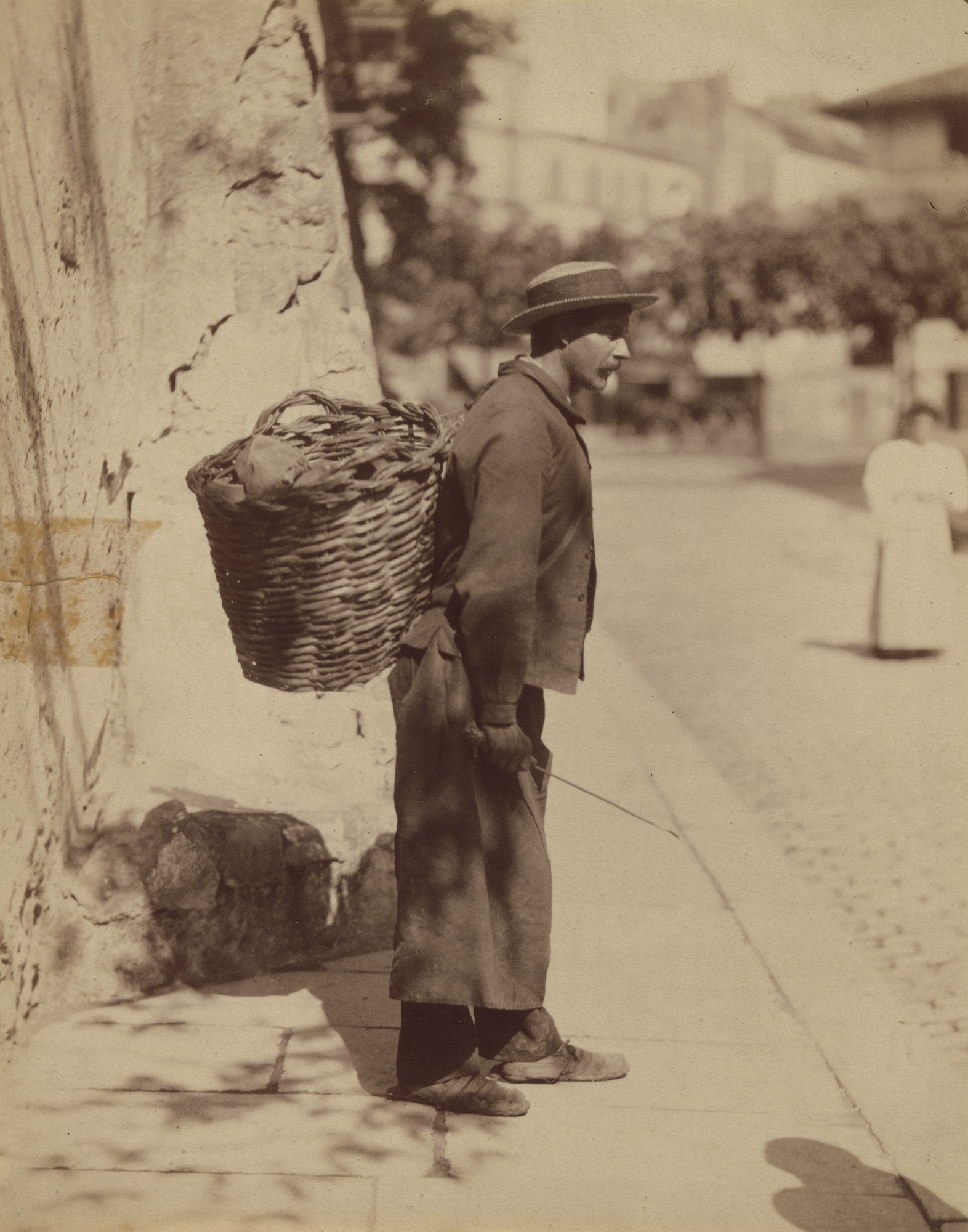
“To review,” he writes, “Atget was a commercial photographer, and although he only rarely worked on assignment, it is fair to assume that he generally had in mind some notion of who might buy the pictures that he was making.” Much of Szarkowski’s energy will be spent describing the limited value of this piece of information. “It would be useful to know whether or not Atget really expected to sell this picture, and if so, to whom,” he muses of Atget’s grand but rudely cropped view of a defunct mill made at the outset of World War I (Charenton, vieux Moulin [May-June] 1915). [32] “After the war Atget’s work changed, in a way that might be described as a movement toward a more romantic view,” Szarkowski reiterates his familiar claim. [33] A few pages later he tempers it–if only to demonstrate this is not a subject about which one ever firmly makes up one’s mind: “I would like to back away a little from the suggestion … that the aging Atget might be thought of as a romantic … I think that he was uninterested in striving for artistic effect and for personal expression, and that he made photographs only to describe fully the nature of his subject, as he saw it.” [34] Later still:
Until Atget reached the age of sixty his work can be more-or-less plausibly explained as that of a man who was more talented than his job description required and who therefore satisfied the needs of his customers and, at the same time, transcended them…. None of the scholars and critics who have been interested in and mystified by Atget (including this writer) have proposed a convincing argument to explain the evident fact that a commercial photographer in his declining years should have changed his goal, and made photographs for which he had no potential buyers. [35]
At times like this that one realizes how important it is to Szarkowski that Atget remain a mystery. After such reckless displays of scholarship, the shroud must be restored if the mystery is to survive. This new book, this coda, is a cautionary tale, all about measuring words. “Good pictures are not explained by words, and in the case of the best pictures a writer would be well-advised to save his paper,” Szarkowski advises himself and his critics. Duly warned, he proceeds to ignore his own advice. Good history can suggest the general circumstances under which a picture was made; it can attempt to describe the shared body of knowledge that defined, at a given time and place, the content of a craft’s tradition. It can even attempt to evoke a sense of the intuition of a time …
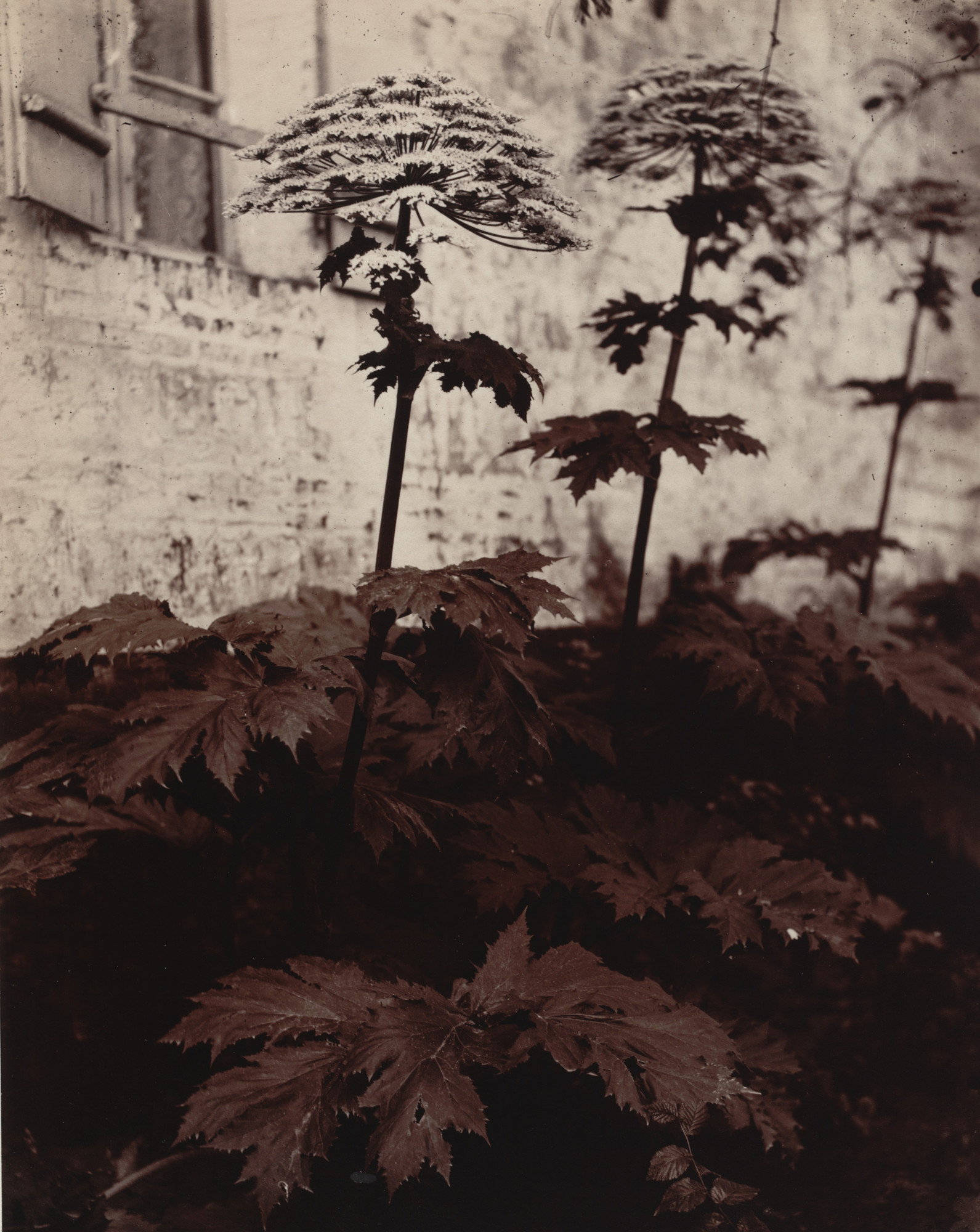
Good criticism can help find a common meeting ground for the work of art and its proper audience, and sometimes even a meeting ground for audience and artist. With exceptional good luck, criticism might with words construct meanings that are different from but consonant with the meanings of pictures. Such constructs of words might possibly guide us towards the neighborhoods where pictorial meanings live.
All this in response to Atget’s ghostly elevation shot of the grand stairwell said to lead to the Orangerie at Versailles (Versailles, escalier de l’Orangerie, 103 degres, 20 metres de largeur, juillet, 1901), though it seems to lead nowhere but the sky, and a rather forbidding one at that. By way of pictorial meaning, Szarkowski confesses,
I have no idea where this picture gets its hallucinatory, threatening power. Perhaps it has something to do with the apparent counterclockwise cant of the picture, although the verticals are erect; perhaps it is the brilliant sky, shaped like a sheet of half-burned note paper; or perhaps it is the low vantage point, that suggests we are crawling toward the stairwell on our hands and knees, pulling behind us an intolerable burden. [36]
This is vintage Szarkowski, at once humble and utterly convinced. He is willing to burn his thoughts on the subject, so long as we are willing to join him among the prayerful, making our pilgrimage to the shrine of le pere Atget on our knees. The burden, presumably, is the weight of an overwhelming past, whether recent or not.
Elsewhere Szarkowski appears not as the penitent, but in his familiar role of barstool academic. Another of Atget’s early studies of Versailles featuring a statue of a satyr (Versailles, parc [1906]) prompts this excursus:
The statue here is of Pan, the god of the fields, or conceivably Silenus, the satyr, who was sometimes but not always depicted, like Pan, as a goat from the waist down. The figure shown here seems a little old for Pan, who is most often depicted as a fundamentally innocent juvenile delinquent; and yet it seems too young for Silenus, whom we are accustomed to see as a potbellied old wreck, hopelessly corrupt, and irretrievably sunken into the inadequate consolations of flesh and wine. [37]
The pictures provide the occasion for free-roaming conversation, the kind one might enjoy overhearing but does not feel invited to enter. This is a private conversation, between the photographs Szarkowski continues to admire and his best guess as to why. Szarkowski is inclined to trust his intuition, as a photographer and a lover of photographs, as a guide to Atget’s unspoken intentions. The name for this sort of thing is channeling. Sometimes it is the historical facts he channels to demonstrate the variety of uses to which (these) photographs can be put. Atget’s photograph of the Pont-Marie bridge (Pont-Marie, avril 1926), prompts this no-nonsense reflection: The function of the prow-shaped abutment is not only to serve as a buttress to the dead downward weight of the masonry but also to protect the foot of the arch by deflecting floating debris away from it and into the open archway. The one seen here would be useful only at high flood stage, when the water was over the quai. The fact that the sycamores are alive and healthy suggests that they were not submerged for long during the great flood of 1910. [38]
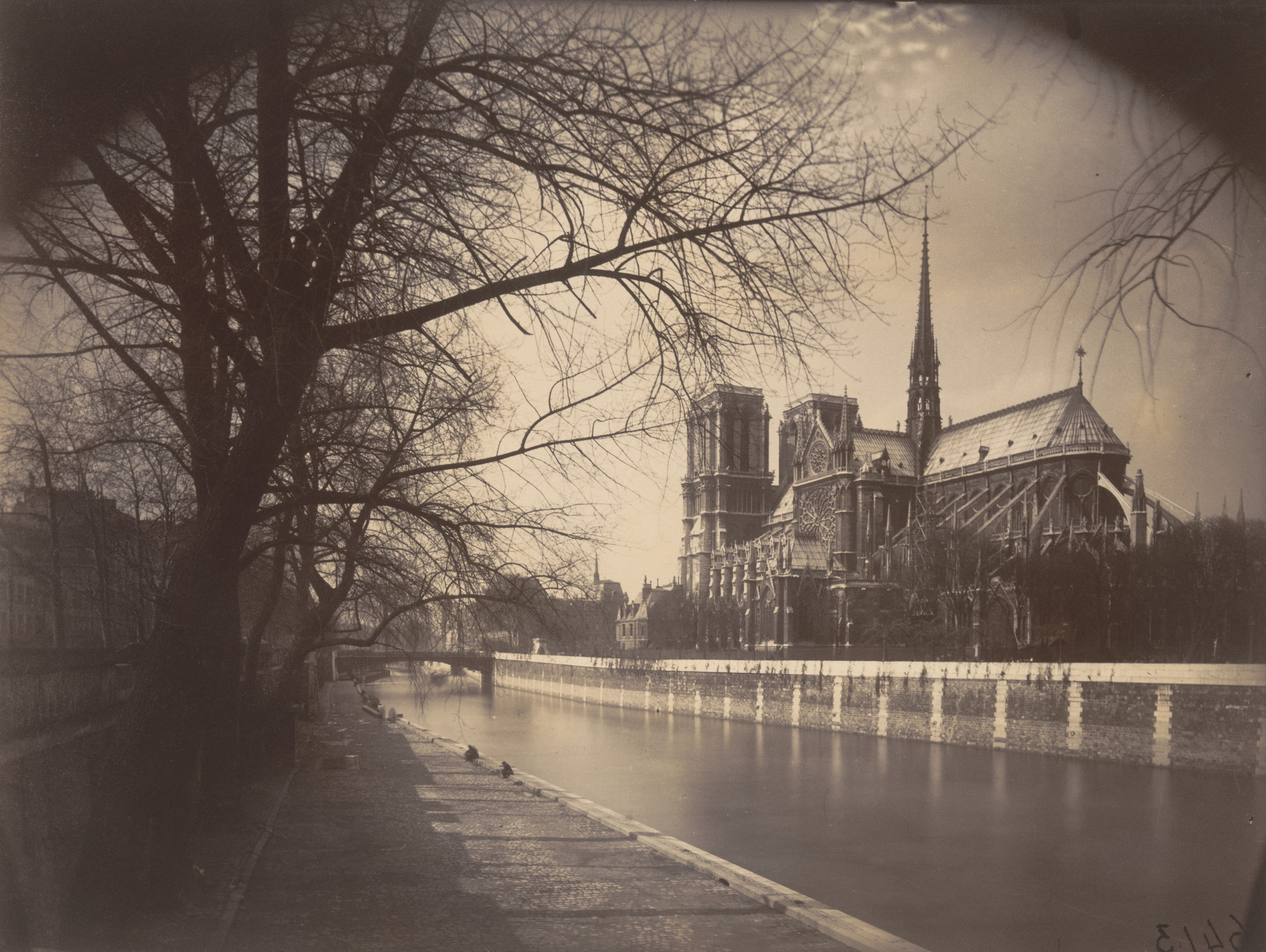
“Standard evidence for historical occurrences,” Benjamin called Atget’s photographs. “Much of the pleasure of a photograph is in its details,” Szarkowski replies. [39] And elsewhere, “In Atget, we are the visitor at the fete (wondering what we might see for our franc), the shopper in the market, the idler hesitating before the door of the bistro, and the merchant confronting his bed.” [40] If these are documents, to him they are also living invitations to participate vicariously in the life of Old Paris. It is indeed a privileged view.
I remember MoMA’s Atget exhibitions vividly, for largely personal reasons. They began the year I became a photographer, and lasted through the years during which my own city, New York, was my principal subject. I was still at an age to be discovering major works of art–and cities–as if I had made them myself. Atget’s example showed how a city could be read like a text, or a loved one, its artifacts exposed like subconscious memories and thoughts. More than half a century after the fact, his photographs also seductively demonstrated the vitality–the presence–of the past. This lesson would take longer to digest. At the time I did not consider there might be a history to the presentation of Atget that shapes how he is seen, of which my own nostalgia was in part a product.
By the time I left New York for its opposite, the California desert, I had begun to realize my habit of keeping all signs of modernity from my photographs (a common enough photographer’s failing) was keeping out of the frame more than it was letting in. Clearly I would rather have been photographing the city my father remembered so vividly from the years just after Atget’s death, a city I sensed around every corner. It seemed possible to retrace the city’s architectural history on almost any downtown walk, traveling back 150 years decade by decade, block by block. It was the time travel that interested me, that simplest way of being in two places at once. (What else is imagination if not that?) But I was seriously mistaken to think the past could be separated from the present, or visualized after the fact. Except, perhaps, through “period” photographs. Nostalgia, I now know, is anger at the loss of a past one never had.
Time travel has always been one of photography’s great fascinations, since photographs seem to make the past. Every photograph memorializes the present, once it has already passed. Photographs remind us that everything we ever thought or saw is in the past, and photographs can lead us to believe we understand the past. When time is measured in seconds or fractions of seconds, the past seems almost infinite. (The pre-photographic past may be, but that is another matter.)
Years later, when my father began to misplace his memory, he would knit together the geographies of the various cities in which he had lived. He would be walking from SoHo to Washington Square, and find himself in San Francisco’s Chinatown, near another Washington Square. Time and place, I learned, once I stopped correcting him, are the dual axes of memory.
For a brief time, Atget’s Paris seemed securely located in memory. No longer. We must forever recoordinate the past, if only to keep up with the present.
STEPHEN LONGMIRE is a photographer and writer living in Washington, D.C. where he teaches the history of photography at Georgetown University.
NOTES
(1.) Jean-Claude Lemagny, “Atget the Prophet,” Atget the Pioneer (Munich, London, New York: Prestel Verlag, 2000), p. 13.
(2.) The question was put to Berenice Abbott (in a letter of April 8, 1929) by the organizer of the celebrated “Film und Foto” exhibition held in Stuttgart in 1929, to which she submitted Atget’s prints along with her own. Quoted by Olivier Lugon in Le “style documentaire” dans la photographie allemande et americaine des annees vingt et trente, doctorate thesis under the supervision of Pierre Vaise, University of Geneva, 1994.
(3.) John Szarkowski, Atget (New York: Museum of Modern Art/Callaway, 2000): p. 126. For a detailed account of Atget’s cataloguing system, see Maria Morris Hambourg, “The Structure of the Work,” The Work of Atget, Vol. 3–The Ancient Regime (New York: Museum of Modern Art/New York Graphic Society, 1983), p. 10. (The essay is distilled from Hambourg’s 1980 Columbia University dissertation, Eugene Atget, 1857-1927: The Structure of the Work. Given its date, needless to say, the discovery must have been made in the late 1970s.)
(4.) “Je puis dire que je possede tout le Vieux Paris,” is Atget’s oft-quoted claim. (“I may say that I possess all of Old Paris.”)
(5.) Szarkowski, p. 82.
(6.) Szarkowski, “Understanding Atget,” Szarkowski & Hambourg, Vol. 4–Modern Times, 1985, p. 11. The remark refers to German photographers of the so-called New Objectivity (Neue Sachlichkeit).
(7.) Rosalind Krauss, “Photography’s Discursive Space,” in The Originality of the Avant-Garde and Other Modernist Myths (Cambridge: The MIT Press, 1985). Interestingly, Krauss had written a comparatively glowing review of the first of MoMA’s Atget exhibitions, “Old France,” for Vogue in October 1981.
(8.) Szarkowski, “Atget and the Art of Photography,” Szarkowski & Hambourg, Vol. 1–Old France, 1981, p. 18.
(9.) Abigail Solomon-Godeau, “Canon Fodder: Authoring Eugene Atget,” in Photography at the Dock: Essays on Photographic History, Institutions, and Practices (Minneapolis: University of Minnesota Press, 1991).
(10.) Molly Nesbit, “The Use of History,” Art in America 74 (February 1986); Atget’s Seven Albums (New Haven: Yale University Press, 1992).
(11.) Szarkowski, Szarkowski & Hambourg, Vol. 1, p. 7.
(12.) Photographer Robbert Flick, Professor of Art at the University of Southern California and Michael S. Roth, President of the California College of Arts and Crafts also participated in the conversation, moderated by independent editor and curator David Featherstone.
(13.) Szarkowski, who believes Atget “served the large, impersonal truth of history,” argues this was best done by creating photographs that would age as well as his subjects; by creating antiques, in other words. “This strategy would work, if the photographs themselves could resemble in their own lineaments, in their own invisible structure and style, the mute disinterest of ancient things.” That Atget’s photographs have become relics proves the passage of time, and shows that it was his abiding subject. Szarkowski, Szarkowski & Hambourg, Vol. 1, p. 26. This presumably is what Nesbit has in mind when she writes of the “vulgar” “modern desire for history as nostalgia … history with mist rolling in.” Nesbit, Art in America 74.
(14.) Abbott’s portraits are often reproduced; for the snapshot, see Hambourg, “A Biography of Eugene Atget,” in Szarkowski & Hambourg, Vol. 2–The Art of Old Paris, 1982, p. 14.
(15.) Gordon Baldwin, with a conversation between Gordon Baldwin, David Featherstone, Robbert Flick, David Harris, Weston Naef, Francoise Reynaud & Michael S. Roth, In Focus: Eugene Atget, Photographs from the J. Paul Getty Museum (Los Angeles: J. Paul Getty Trust, 2000), p. 98.
(16.) Ibid., p. 101.
(17.) Ibid., pp. 104-105.
(18.) Ibid., p. 102.
(19.) Ibid., p. 104.
(20.) Ibid., P. 129.
(21.) Ibid., p. 137.
(22.) Ibid., p. 136.
(23.) The threesome is reproduced on pages 38-39 of the exhibition catalog, the Duchamp on the left, both Atgets on the facing page to the right. In the gallery it was effectively a triptych, the larger Duchamp more prominently displayed in the center, flanked by the two Atgets, on a temporary wall facing the entrance to the first gallery. The difference may sound slight, but the effect was not.
(24.) Several of Friendlander’s early tangled, wide-angle landscapes (like Pomona, New York, 1975) are paired with Atget’s 1913 photographs of Paris’s overgrown fortifications. Sure enough, the undergrowth bears some resemblance, as does the imbalanced view, but such pairings discourage analysis of one of Atget’s least understood subjects, except inasmuch as they encourage wry thoughts about Friedlander’s view of the semi-suburban green spaces that ring American cities.
(25.) Robert Hirsch, Seizing the Light: A History of Photography (Boston: McGraw Hill, 2000), p. 254.
(26.) This collection will be the subject of another Atget publication forthcoming from the French publisher Marval later this year.
(27.) “A document could not exist alone,” as Molly Nesbit writes. “It needed a viewer and a task.” Molly Nesbit, “Photography and History: Eugene Atget,” in Michel Frizot, ed., A New History of Photography (Koln: Konemann, 1998), p. 403. The document is defined by its use, not its appearance per se. To contemporary American viewers of photography, for whom “documentary” tends to mean the activist photography of the 1930s that championed the disadvantaged, it might seem the look and feel of such photographs (many of them made by photographers in the first blush of Atget’s influence, like Evans) has come to define a documentary style. This style is still very much in use, but it should not be considered definitional of the documentary. Aerial reconnaissance photography might provide just as apt an example of a documentary use of the medium, with unrecognizably dissimilar results. Evans’s remark is salient: “Art is useless, so it can never be a document. But it can readily take on the style of a document.” Quote d in Jean-Claude Lemagny, “Atget the Prophet,” in Atget the Pioneer (New York: Prestel, 2000), p. 16.
(28.) Szarkowski, p. 34.
(29.) Szarkowski, Szarkowski & Hambourg, Vol. 4, p. 25; see also Szarkowski, p. 44.
(30.) The paragraph is worth quoting in full, since it is Szarkowski’s fullest response to the accusation he has turned a radical into a nostalgic. (The argument about Atget’s fitness for display in modern art museums is not one to which he can afford a reply.) “The noted Atget scholar Molly Nesbit–if I read her correctly–has seen in Atget’s work, or what she regards as the best or most important part of it, a coherent statement centrally concerned with describing the prevalence and power of the class system during Atget’s time. Certainly his project provides excellent data on the issue of class. Given the breadth and depth of his attention, this would seem almost inevitable. And if one defines class so broadly that it subsumes the whole spectrum of human concerns, then one might agree that Atget’s work is about class.” (Szarkowski, p. 64.) Szarkowski does not bother to mention that reading Molly Nesbit “correctly” is no easy trick. On this important subject, as on so many others, the curator’s intuition is his privileged guide. Writing later of Atget’s album of Parisan interiors, about which Nesbit has written at length, he speculates, “It appears that Atget was trying to make the most of the social scale that was accessible to him. He did not in this series attempt either end of the scale: he did not venture into the interiors of the ragpickers or into the wagons of the gypsies, nor did he gain access to the rooms of the true haute bourgeoisie. It is likely that he never tried.” (Szarkowski, p. 84.) The old question remains: how can we know? Writing of one of Atget’s portraits of the zoniers, or squatters in the band called the zone outside the city’s old fortifications–the subject of an album central to Nesbit’s analysis–Szarkowski intuits: “Atget apparently worked with perfect calm and equanimity on the roughest waterfronts, and in the neighborhoods of the slaughterhouses and tanneries of Paris, but he seems often to have been slightly nervous in the zone; in any case his framing and focus seem uncertain, especially when he confronts the people who live there, who stare at him with an incomprehension that seems to echo his own. “This plate (Romanichels, groupe (1912)–a photograph Dorothea Lange would have been proud to have made) is perhaps atypical of the series; it seems to suggest a degree of empathy between the subject and the photographer that probably distorts the position of both.” (Szarkowski, p. 132.) Szarkowski is generously willing to undercut even himself, but he reserves the right to determine the type and to read the details of his photographer’s mood. Atget’s framing and focus were famously “uncertain” on more than one occasion, and in more than one site.
(31.) Ibid., p. 142.
(32.) Ibid., p. 140.
(33.) Ibid., p. 152.
(34.) Ibid., p. 158.
(35.) Ibid., p. 196.
(36.) Ibid., p. 110.
(37.) Ibid., p. 116.
(38.) Ibid., p. 90.
(39.) Ibid., p. 107.
(40.) Ibid., p. 210.
